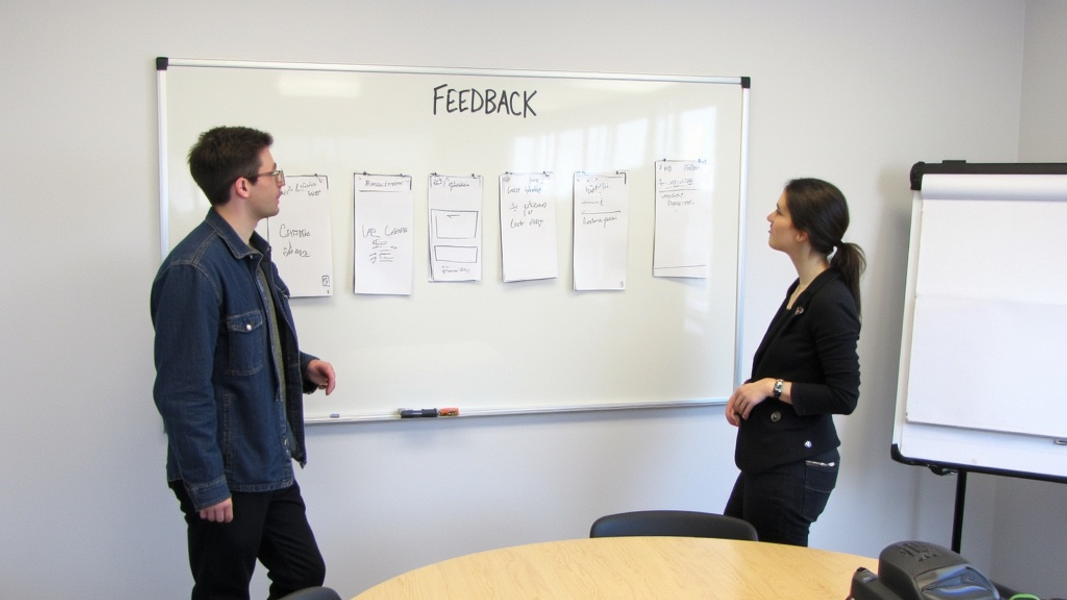
Have you ever wondered how tech giants like Google and Tesla ensure their products are ready for the public? The secret lies in beta testing. This powerful tool helps companies find bugs, improve features, and make sure users love their products before launch. Let's dive into some real-world beta testing examples and learn how you can use these lessons to make your own products better.
Understanding Beta Testing
Beta testing is a key step in making sure a product works well before it's sold to everyone. It comes after alpha testing, which is done by the company's own team. In beta testing, real users try out the product and give feedback.
What Is Beta Testing?
Beta testing is when a company gives its almost-finished product to a group of people outside the company to use. These people, called beta testers, use the product like they would if they bought it. They look for problems, suggest improvements, and say what they like or don't like.
Why Is Beta Testing Important?
Beta testing helps companies in many ways:
- It finds bugs that the company's team might have missed.
- It shows how real people use the product, which can be different from what the makers expected.
- It helps make sure the product is easy to use and does what people want.
- It can create buzz and excitement about the product before it's officially released.
Beta testing is crucial because it's the last chance to make big changes before a product goes on sale. It helps companies avoid costly mistakes and make products that people will love and use.
Types of Beta Testing
There are different ways to do beta testing. Each type has its own good points and challenges. Let's look at the main types.
Open Beta Testing
Open beta testing is when anyone can try the product. Companies often use this for software or games. It's great for getting lots of feedback quickly and creating excitement about the product.
For example, many video game companies use open betas. They let players try a game for free before it's finished. This helps find bugs in the game and see how well the online parts work when lots of people are playing at once.
Closed Beta Testing
Closed beta testing is more private. The company picks a small group of people to test the product. This is good for products that need to be kept secret or when the company wants very specific feedback.
Apple often uses closed beta testing for its new operating systems. They let some developers try new versions of iOS or macOS before everyone else. This helps make sure apps will work with the new system when it comes out.
Technical Beta Testing
Technical beta testing focuses on how well a product works. It looks at things like speed, reliability, and whether the product can handle lots of users at once. This is important for complex software or hardware.
Microsoft does technical beta testing for its Windows operating system. They have a program called Windows Insider where people can try new versions of Windows and report any technical issues they find.
5 Real-World Beta Testing Examples
Let's look at some famous examples of beta testing. These show different ways companies have used beta testing to make their products better.
1. Gmail's Invite-Only Beta
When Google launched Gmail, they did something clever. They made it invite-only at first. This created a lot of excitement and made people really want to try it.
How it worked:
- Google gave invites to a small group of people.
- These people could invite their friends.
- This made Gmail feel special and exclusive.
The result:
- Gmail got lots of attention.
- People gave useful feedback to make the email service better.
- When Gmail finally opened to everyone, it was already very popular.
This beta test showed how making something hard to get can make people want it more. It also let Google improve Gmail slowly based on what users said.
2. Minecraft's Extended Beta Phase
Minecraft, the popular building game, had a very long beta test. The game's creator, Markus Persson, released an early version in 2009. He kept adding new things and fixing problems based on what players said.
Key points:
- The beta lasted for about two years.
- Players could buy the game at a lower price during the beta.
- New features were added regularly based on player feedback.
Results:
- Minecraft built a strong community of players.
- The game improved a lot during the beta.
- When the full game came out, it was already very popular and well-made.
This example shows how beta testing can be used to build a community around a product. It also shows that a long beta can work well if you keep improving the product.
3. Dropbox's Viral Beta Program
Dropbox used a clever way to get more beta testers. They let people who were already testing Dropbox invite their friends. If someone joined using an invite, both people got extra free storage space.
How it worked:
- Beta testers could invite friends.
- Both the inviter and the new user got a reward.
- This made people want to invite others.
Results:
- Dropbox got many new users quickly.
- People told their friends about Dropbox, which was free advertising.
- The company learned how people used the service with their friends and coworkers.
This beta test shows how giving people a reason to invite others can help a product grow fast. It also helped Dropbox see how their service worked when groups of friends or coworkers used it together.
4. Tesla's Early Access Program
Tesla uses an Early Access Program to test new features for its electric cars, especially self-driving capabilities. This program lets some Tesla owners try new software before everyone else.
How it works:
- Selected Tesla owners get early access to new features.
- These drivers test the features in real-world conditions.
- They give feedback to help improve the software.
Benefits:
- Tesla can test new features safely with experienced drivers.
- The company gets real-world data to improve self-driving technology.
- Early Access members feel special and more connected to the Tesla brand.
This example shows how beta testing can work for physical products with software components. It also highlights the importance of safety when testing new technologies.
5. Slack's Beta Testing Approach
Slack, the popular work chat app, used a focused approach to beta testing. They worked with specific companies to test and improve their product.
Their method:
- Slack chose a few companies to use their app for internal communication.
- They watched closely how these companies used Slack.
- The Slack team quickly made changes based on what they saw and heard.
Outcomes:
- Slack learned exactly what businesses needed in a chat app.
- They could fix problems and add new features quickly.
- When Slack launched publicly, it was already well-suited for business use.
This beta test shows the value of working closely with a small group of testers. It helped Slack make a product that fit well with how businesses actually work.
Key Strategies for Successful Beta Testing
Now that we've seen some real examples, let's look at how you can make your own beta tests work well.
1. Set Clear Goals
Before you start, know what you want to learn. Do you want to find bugs? See if people like using your product? Make sure it works well for many people at once? Having clear goals will help you plan your beta test and know if it's successful.
2. Choose the Right Testers
Pick testers who are like the people who will use your product when it's finished. If you're making a game for kids, get kids to test it. If it's a tool for accountants, find some accountants to try it out.
3. Make It Easy to Give Feedback
Give your testers a simple way to tell you what they think. This could be a form in your app, a special email address, or a online forum. The easier it is to give feedback, the more you'll get.
4. Listen and Respond
Pay attention to what your testers say. If many people have the same problem or suggestion, it's probably important. Let your testers know you hear them by fixing issues or explaining your choices.
5. Keep Testing and Improving
Beta testing isn't just a one-time thing. Keep testing and making your product better, even after you launch. Many successful products are always improving based on what users say.

Common Challenges in Beta Testing
Beta testing can be tricky. Here are some common problems and how to handle them:
Managing Tester Expectations
Some testers might expect a perfect product. Make sure they know it's still being worked on. Tell them clearly what you want them to do and what they can expect.
Balancing Feedback with Development Time
You'll probably get lots of ideas from testers. But you can't do everything. Focus on the most important feedback that fits with your product goals.
Keeping Things Private
If you're testing something secret, make sure your testers know not to share information. You might need them to sign an agreement saying they'll keep things private.
Dealing with Negative Feedback
Some testers might not like your product. That's okay! Try to understand why they don't like it. Their feedback can help you make big improvements.
FAQs
How long should a beta test last?
There's no perfect length for a beta test. It depends on your product and goals. Some beta tests last a few weeks, while others, like Minecraft's, can go on for months or even years. The key is to keep testing until you're confident your product is ready for everyone to use.
How many beta testers do I need?
The number of beta testers you need depends on your product and what you want to learn. For a simple app, you might only need 20-50 testers. For a complex game or business software, you might want hundreds or even thousands. Start with a smaller group and add more if you need to.
Should I pay my beta testers?
Usually, you don't need to pay beta testers. Many people are happy to try new products for free. But you might want to offer rewards like early access to the final product, special features, or public recognition. If you're asking for a lot of time or effort, or if you need testers with special skills, you might consider paying them.
What if I find a major problem during beta testing?
Finding big problems is actually good - that's what beta testing is for! If you find a major issue:
- Thank the testers who found it.
- Decide how important the problem is and how long it will take to fix.
- Let your testers know you're working on it.
- Fix the problem and test the solution.
- Learn from what happened to avoid similar issues in the future.
Remember, it's much better to find and fix problems during beta testing than after your product is released to everyone.
![Wide shot of a meeting room with walls covered in handwritten notes, and a single person standing thoughtfully in the center; there's "[FEEDBACK]" written with large bold font on the main wall](https://cdn.contlyai.com/article-images/1741356183970.webp)
Conclusion
Beta testing is a powerful tool for making products better. It lets real people try your product and tell you what works and what doesn't. By looking at examples like Gmail, Minecraft, and Tesla, we can see different ways to do beta testing.
The key things to remember are:
- Choose the right type of beta test for your product.
- Pick testers who are like your real users.
- Make it easy for testers to give you feedback.
- Listen to what testers say and use their ideas to improve.
- Keep testing and improving, even after you launch.
By using these strategies, you can make your product the best it can be before you share it with the world. Whether you're making a new app, a game, or a complex piece of software, beta testing can help you succeed.
